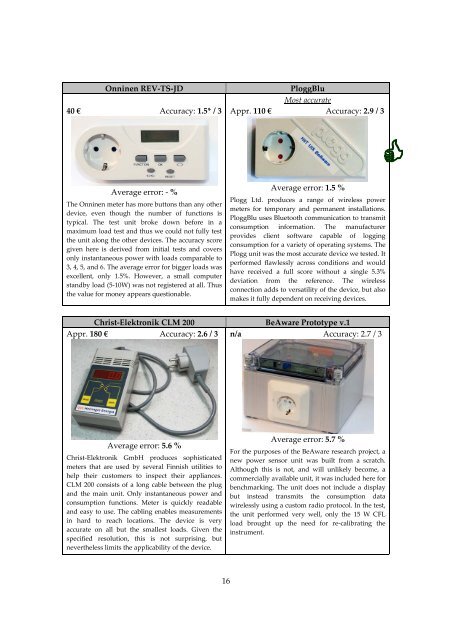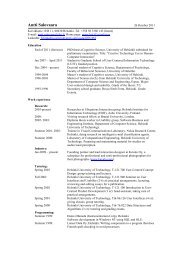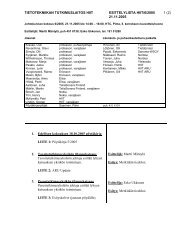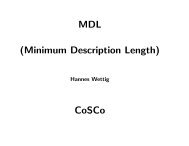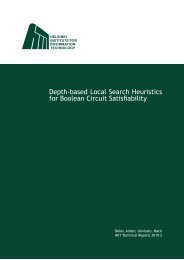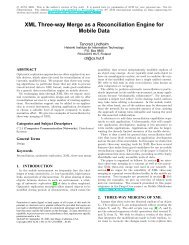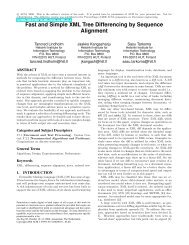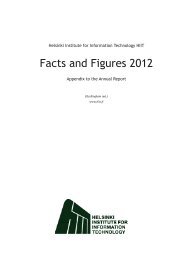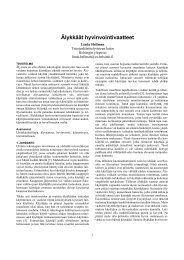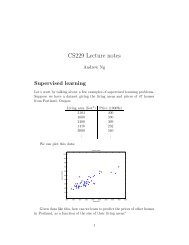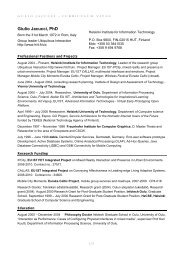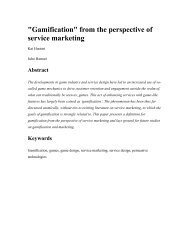Comparison of EndâUser Electric Power Meters for Accuracy
Comparison of EndâUser Electric Power Meters for Accuracy
Comparison of EndâUser Electric Power Meters for Accuracy
Create successful ePaper yourself
Turn your PDF publications into a flip-book with our unique Google optimized e-Paper software.
Onninen REV‐TS‐JD<br />
40 € <strong>Accuracy</strong>: 1.5* / 3<br />
PloggBlu<br />
Most accurate<br />
Appr. 110 € <strong>Accuracy</strong>: 2.9 / 3<br />
<br />
Average error: ‐ %<br />
The Onninen meter has more buttons than any other<br />
device, even though the number <strong>of</strong> functions is<br />
typical. The test unit broke down be<strong>for</strong>e in a<br />
maximum load test and thus we could not fully test<br />
the unit along the other devices. The accuracy score<br />
given here is derived from initial tests and covers<br />
only instantaneous power with loads comparable to<br />
3, 4, 5, and 6. The average error <strong>for</strong> bigger loads was<br />
excellent, only 1.5%. However, a small computer<br />
standby load (5‐10W) was not registered at all. Thus<br />
the value <strong>for</strong> money appears questionable.<br />
Average error: 1.5 %<br />
Plogg Ltd. produces a range <strong>of</strong> wireless power<br />
meters <strong>for</strong> temporary and permanent installations.<br />
PloggBlu uses Bluetooth communication to transmit<br />
consumption in<strong>for</strong>mation. The manufacturer<br />
provides client s<strong>of</strong>tware capable <strong>of</strong> logging<br />
consumption <strong>for</strong> a variety <strong>of</strong> operating systems. The<br />
Plogg unit was the most accurate device we tested. It<br />
per<strong>for</strong>med flawlessly across conditions and would<br />
have received a full score without a single 5.3%<br />
deviation from the reference. The wireless<br />
connection adds to versatility <strong>of</strong> the device, but also<br />
makes it fully dependent on receiving devices.<br />
Christ‐Elektronik CLM 200 BeAware Prototype v.1<br />
Appr. 180 € <strong>Accuracy</strong>: 2.6 / 3 n/a <strong>Accuracy</strong>: 2.7 / 3<br />
Average error: 5.6 %<br />
Christ‐Elektronik GmbH produces sophisticated<br />
meters that are used by several Finnish utilities to<br />
help their customers to inspect their appliances.<br />
CLM 200 consists <strong>of</strong> a long cable between the plug<br />
and the main unit. Only instantaneous power and<br />
consumption functions. Meter is quickly readable<br />
and easy to use. The cabling enables measurements<br />
in hard to reach locations. The device is very<br />
accurate on all but the smallest loads. Given the<br />
specified resolution, this is not surprising, but<br />
nevertheless limits the applicability <strong>of</strong> the device.<br />
Average error: 5.7 %<br />
For the purposes <strong>of</strong> the BeAware research project, a<br />
new power sensor unit was built from a scratch.<br />
Although this is not, and will unlikely become, a<br />
commercially available unit, it was included here <strong>for</strong><br />
benchmarking. The unit does not include a display<br />
but instead transmits the consumption data<br />
wirelessly using a custom radio protocol. In the test,<br />
the unit per<strong>for</strong>med very well, only the 15 W CFL<br />
load brought up the need <strong>for</strong> re‐calibrating the<br />
instrument.<br />
16


